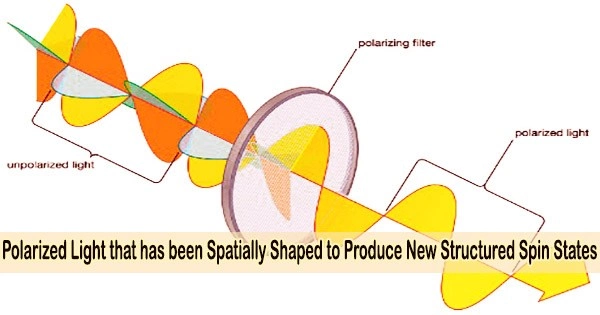Electric and magnetic fields that oscillate perpendicular to one another make up light. Polarized light is produced when these oscillations are constrained, say along a plane. In optical communications, polarized light is crucial, and it may also completely change the way data is stored.
Current electronic devices store information in the form of electronic charges. An alternative is provided by spin, a peculiarly quantum feature of electrons. Polarized light can be used to store information while controlling the spin.
Spin-polarized electrons, or spins aligned in a particular direction, are produced when a polarized light beam interacts with electron spins within a semiconductor. To date, only light that has a spatially uniform polarization, or uniformly polarized light, has been used to manipulate electron spins.
However, if the polarization has an additional spatial structure (variation), it can produce spatially structured electron spins, opening up new ways to store information.
To this end, a group of researchers, led by Junior Associate Professor Jun Ishihara from and including graduate student Takachika Mori, graduate student (at the time of the research) Takuya Suzuki, and Professor Kensuke Miyajima from Tokyo University of Science (TUS), Japan, has now devised a method for generating such spatially structured electron spins using a structured light with spatially varying polarization profile.
The conversion of the spatial polarization structure of light into a spatial structure of spin along with the generation of new spin spatial structures in combination with effective magnetic fields in solids are expected to lead to elemental technologies for higher-order quantum media conversion and information capacity enhancement using spin textures.
Professor Jun Ishihara
The study, published in the journal Physical Review Letters, was done in collaboration with research groups from Chiba University, Tohoku University, and Tsukuba University in Japan.
“In this work, we generated a doughnut-shaped structured light a vector optical vortex beam with an orbital angular momentum (OAM) from a basic Gaussian beam using vortex half-wave plate and quarter-wave plate devices. We then used this beam to excite the electron spins confined within a gallium arsenide/aluminum gallium arsenide semiconductor quantum well. These spins, in turn, formed a helical spatial structure in a circle,” explains Dr. Ishihara.
The helix created by the beam with an OAM number of one had two spin periods that spun up and down around the circle, but the helix produced by the beam with an OAM number of two had four such variations.
These results showed that the electron spins within the semiconductor had acquired the spatial polarization structure of the optical vortex as dictated by the OAM. A higher information storage capacity, indicated by a higher spin repetition rate around the circle, was also implied by raising the OAM number.
Additionally, the researchers used a single beam to simultaneously generate two spin waves with opposing phases in the vertical direction by taking advantage of the magnetic field that results from the spin-orbit interaction acting on electron spins in the quantum well.
This suggested that different spin states with spatial structures could be created by combining structured light beams and effective magnetic fields, which are properties of solids. The researchers spoke about the potential for their work in the future after obtaining such amazing results.
“The conversion of the spatial polarization structure of light into a spatial structure of spin along with the generation of new spin spatial structures in combination with effective magnetic fields in solids are expected to lead to elemental technologies for higher-order quantum media conversion and information capacity enhancement using spin textures,” says Dr. Ishihara.





